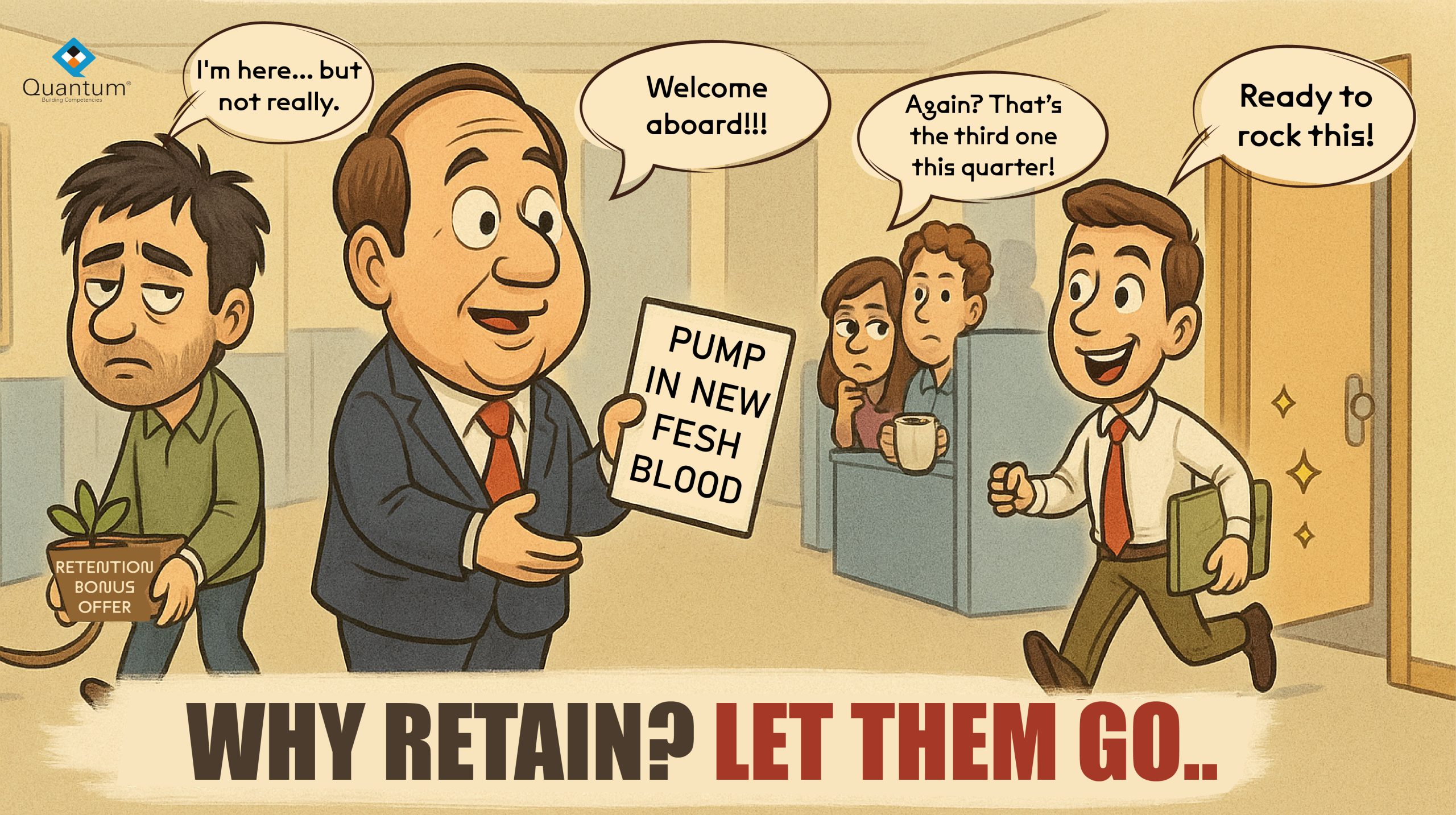
Reviewing 2025
Hello,Happy Holidays! I hope you’re doing well. Let me keep doing what I’ve been doing every year.The year that is

Why It’s Better to Let Go of Employees Who Aren’t Engaged Than to Keep Them
Beginning
When an employee quits today, companies have to decide whether to keep them or let them go. This is becoming more and more of a problem. Counter-offers and retention strategies are common, but research and real-world experience show that keeping employees who are disengaged or emotionally checked out often leads to lower productivity, lower morale among the team, and higher costs. Letting go of employees who have already quit, especially those who are emotionally detached, is often a better long-term and emotionally smart choice enshedding.
The Problem of Emotional Detachment
When workers quit, the emotional bond between them and the company is often already broken. Counter-offers based on money or the situation may cause people to change their minds for a short time, but the emotional damage is harder to fix.
HR Manager: “You’ve done a great job.” “Why are you going now?”
Employee: “It’s not just about the job.” I don’t feel like I’m part of it anymore. “I feel like I’ve outgrown this place.”
Even if the employee stays, emotional disinvestment usually leads to less commitment and involvement.
Statistical Proof of the Effects of Disengagement
A Gallup report from 2023 says:
Only 23% of workers around the world are really involved in their jobs.
Employees who aren’t engaged cost businesses 18% of their annual salary in lost productivity.
Teams that aren’t engaged have 81% more absences and 64% more safety incidents.
According to a study in the Harvard Business Review, 75% of employees who accept counter-offers leave within 6 to 12 months, either on their own or because they were fired. Once you make the psychological exit, it’s hard to go back.
Performance Drops After Resigning
People who stay on after quitting often show:
Less initiative and creativity. Not responding well to feedback. Staying away from long-term projects.
Pulling away emotionally from team dynamics.
Team Lead: “She left and then changed her mind, and now it feels like she’s only here in body, not in spirit.”
The performance curve levels off, and in many cases, it drops below the team average, which makes other team members who are still fully invested angry.
A Comparison of Retention and Letting Go
Retention vs. Letting Go: A Comparative Analysis
| Aspect | Retaining Disengaged Employees | Letting Go Timely |
| Short-term productivity | Possibly maintained | Disrupted briefly |
| Long-term engagement | Declines sharply | Opportunity to build afresh |
| Impact on team morale | Negative | Neutral to positive |
| Hidden costs | High (productivity loss, emotional drag) | Low |
| Innovation & adaptability | Decreases | Refreshes with new blood |
| Emotional alignment | Misaligned | Realigned with hiring |
Emotional Intelligence (EI) and Decisions Made by Organisations
Letting go of employees who don’t care about their work is a smart emotional move. Leaders with high EI know that emotional commitment, not just skill, is what makes a workplace successful.
Daniel Goleman’s EI Framework stresses how important it is for leaders to be aware of their own emotions, be able to empathise with others, and manage relationships. Leaders with high EI can tell when it’s better for both parties for an employee to leave and handle the change with grace.
Manager with EI: “I get that you need to change. Let’s work together to make your move go smoothly. “We’ll find someone whose vision fits the job better.”
These kinds of empathetic exits keep relationships strong and lower conflict within the organisation.
Strategic Advantage of Leaving on Time
Companies that let go of employees who aren’t engaged on purpose gain in a number of ways:
Faster team realignment.
Chance to hire more people who fit in.
Keeping the culture of the workplace safe.
Less hidden costs and passive resistance.
According to a McKinsey report from 2022, teams that dealt with disengagement saw a 20–30% increase in team output over the next six months.
Final Thoughts
Retention is useful in some situations, like when highly engaged employees are going through a temporary problem, but it usually doesn’t work on people who are emotionally detached. Letting go is not a failure; it’s a decision based on emotional intelligence and strategic foresight that looks to the future.
Companies need to stop just reacting to people who leave and start building teams that are emotionally invested. In the end, a team that is emotionally aligned does better than one that is held together by short-term deals.
© Dr. Pratik P. SURANA (Ph.D.)
Quantum Group.
#LetThemGo #EmotionalIntelligence #WorkplaceCulture #DisengagementCosts #LeadershipMatters #QuantumGroup #StrategicHR #RetentionReality #FutureOfWork

Hello,Happy Holidays! I hope you’re doing well. Let me keep doing what I’ve been doing every year.The year that is

There are two types of silence in every organisation.One comes from being focused.The other comes from emotional withdrawal. The second

Feedback is seen as a way to help people progress in any organisation.But in real life, it often feels like